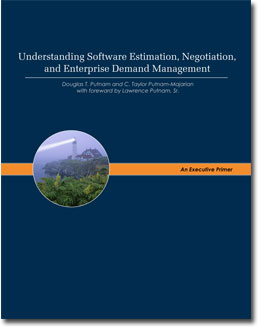New Article: Avoiding a Doomed Software Project by Checking the Staff Build-Up Plan
The staff build-up plan defines how many, what kind, and when staff are needed for the entire project. Too many or too few, bringing them on too early or late, employing the wrong mix of expertise or experience - avoiding all these pitfalls with a staff build-up plan will ensure a successfully staffed project. Reviewing proposals for a complex project, such as major software development or support, is a challenging activity. Since labor is the major cost and feasibility determinant for such projects, requiring the submission of a "staff build-up plan" and verifying its realism is crucial in determining whether a proposed project can realistically succeed. In this article for Contract Management Magazine, QSM's Gene Shuman identifies the key components of an effective staff build-up plan.


